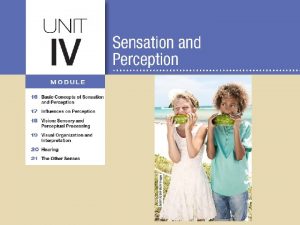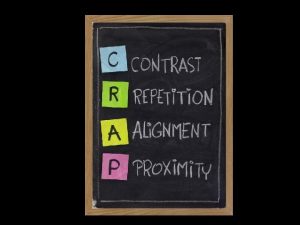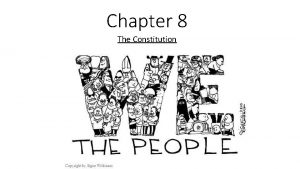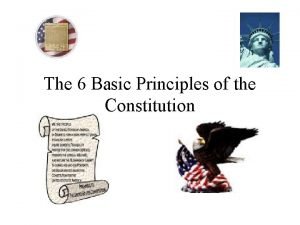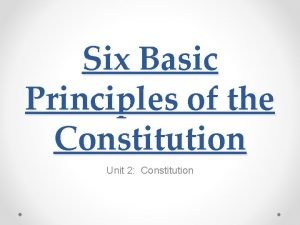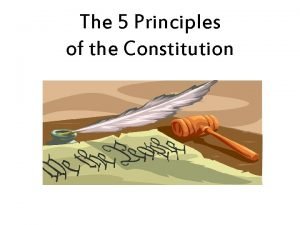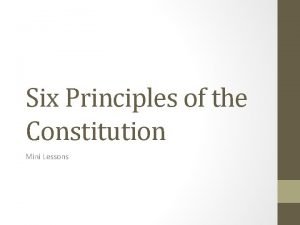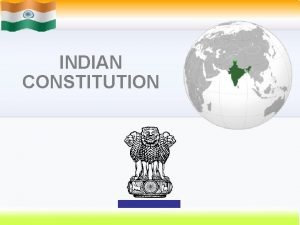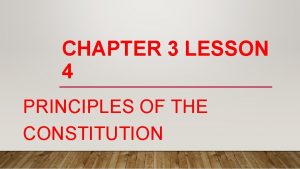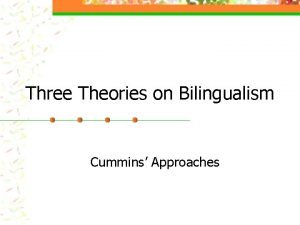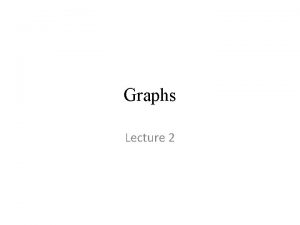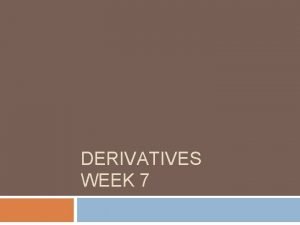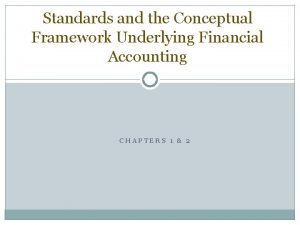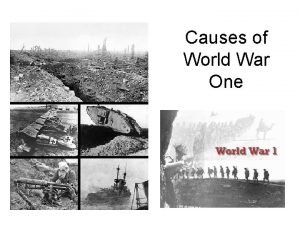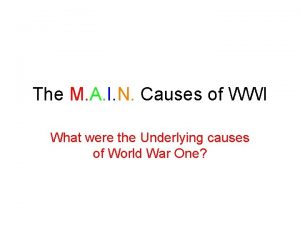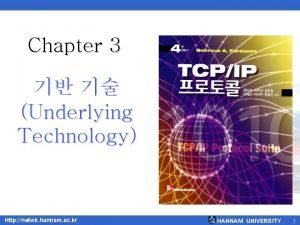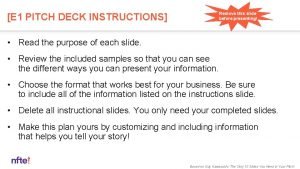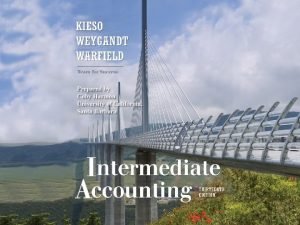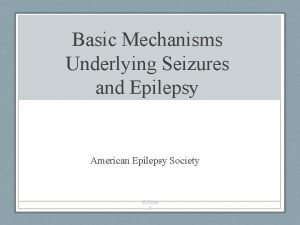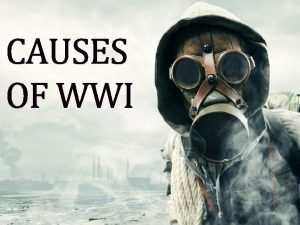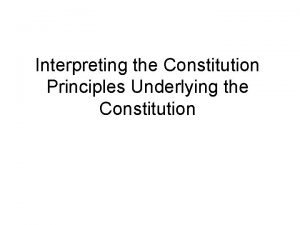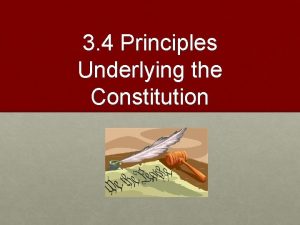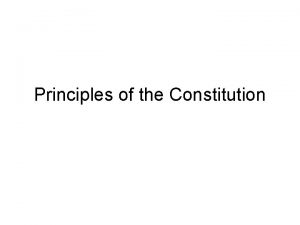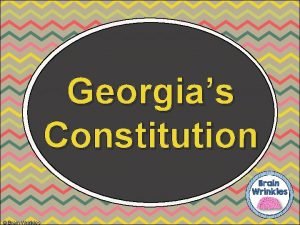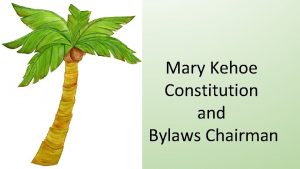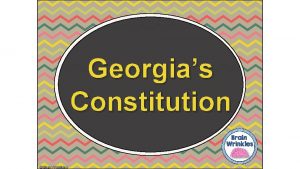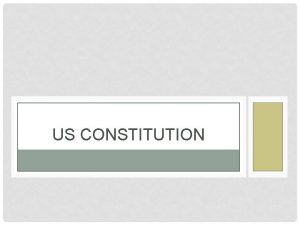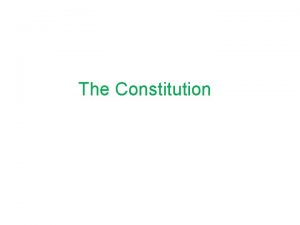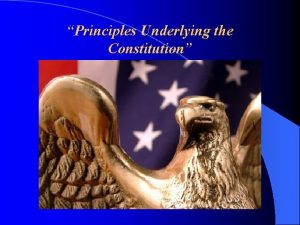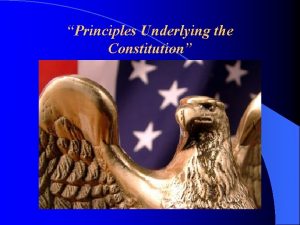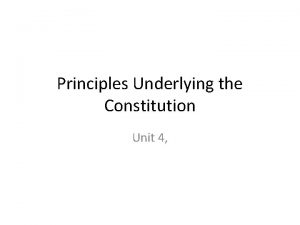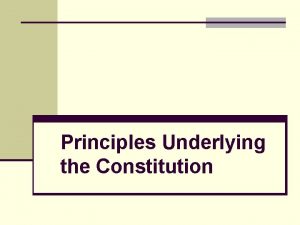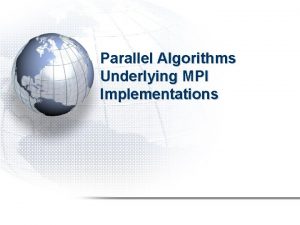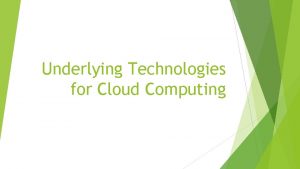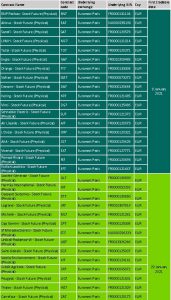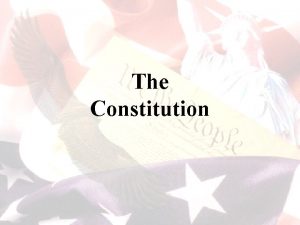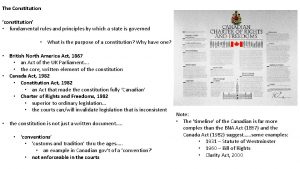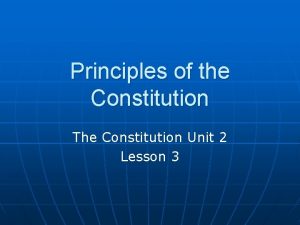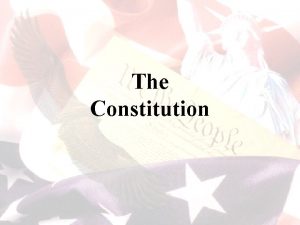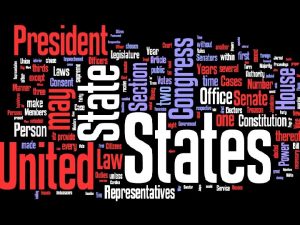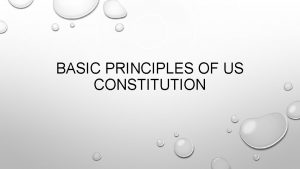Principles Underlying the Constitution Underlying Principles in the




























- Slides: 28

“Principles Underlying the Constitution”

Underlying Principles in the Constitution l In the USA, we have a constitutional gov’t. l There are five underlying principles that drive our government and define its purpose.

1. “Popular Sovereignty”

“Popular Sovereignty” l “Popular Sovereignty” = People Rule!!! l It is the belief that the power lies with the “people” (right of the people to rule) “We the People…” l Power to rule comes from the “consent of the governed”…(permission of the people) l

“Popular Sovereignty” We have a special representative democracy called a “Republic”. This is a type of Representative Democracy where the “people” choose those to represent their interests in government. (Think of the Pledge of Allegiance) l l The right of the people to vote gives us the chance to vote and select our leaders.

2. “Rule of Law”

“Rule of Law” l We get the idea of Rule of Law from the Magna Carta! l Stemming back to ideas from the Magna Carta and The English Bill of Rights, our Constitution emphasizes that the government should have certain limits. l The government is limited by the law – the LAW applies to everyone! Everyone is under the law!!!

The “rule of law” protects citizens from arbitrary abuses of government power. l The rule of law impacts government officials in the following ways: l – Fair procedures – Decisions based on the law – The law should be fair for everyone – Enforcement of the law – Government Transparency What would a government look like that operates under the rule of law? One that doesn’t?

3. “Federalism”

“Federalism” l “Federalism” is the idea that the states and the national (also called federal) gov’t share power. States share their powers with the national government and vice versa. l National and state governments share powers – this further limits the power of the federal government by giving some powers to the states. l As citizens, how are we impacted by federalism? (i. e. , follow both federal and state laws)

Powers are Divided

“Expressed” Powers “Expressed” or “enumerated” or “delegated” Powers are specifically given to the federal (national) government only! These are listed in the Constitution

“Expressed” Powers § § § § Regulating trade Conducting foreign affairs Raise & support armies Coin or print money Create postal system Govern U. S. territories Regulate immigration

“Reserved” Powers l “Reserved” Powers are saved for the state governments. l These are powers that are NOT specifically listed in the Constitution or ARE specifically stated as belonging to the states.

“Reserved” Powers l l l Provide for public safety, health, welfare within the state Regulate trade within the state Create local governments within the state Conduct elections within the state Establish public school systems within the state

“Concurrent” Powers l “Concurrent”powers are the powers that the national government and state governments share. l BOTH levels of government have these powers!

“Concurrent” Powers l l l l Make and Enforce the laws Establish courts Collect taxes Borrow money Provide for the general welfare Prisons Roads

10 th Amendment Reserved Powers - Amendment 10 of the Constitution…“The powers not delegated to the United States by the Constitution, nor prohibited by it to the States, are reserved to the States respectively, or to the people” l All powers not mentioned in the Constitution belong to the states. i. e. education l

The FINAL Authority Supreme Law of the Land Article 6 of the Constitution: – the Constitution is the final say in all matters! The Supremacy Clause -establishes that the federal constitution, and federal law generally, take precedence over state laws, and even state constitutions .

4. “Separation of Powers”

“Separation of Powers” l Enlightenment Thinker and French philosopher Baron de Montesquieu - Spoke of separating power among the branches. l He believed the best way to protect the rights of the “people” is to clearly separate the functions of government. (3 names, 3 words, 3 branches…)

“Separation of Powers” l The 3 “branches” of government are: – Legislative – make the laws – Executive – enforce the laws – Judicial – interpret the laws. l NO SINGLE “BRANCH” IS MORE POWERFUL POWERS ARE SEPARATE! l Separation of Powers limits the power of the government.

5. “Checks & Balances”

“Checks & Balances” l This process is used to keep any one branch from becoming too powerful. l Checks & Balances limits the power of the government by allowing the three branches to “check” one another’s powers.

“Checks & Balances Examples” l The President can appoint justices to the Supreme Court with the Senate’s approval. – The Senate can “check” the President by approving or rejecting appointments.

“Checks & Balances Examples” l The Congress can pass bills (to become laws). – The President can “check” Congress by vetoing those bills, preventing them from becoming a law…. . – Congress can override a veto (very unlikely though) l The House can check the President with their power to impeach. – Impeach means to formally ACCUSE of a wrongdoing!

“Checks & Balances” l The Supreme Court can check the Congress and President by declaring the laws made by Congress and approved by the President as unconstitutional. This would void the law

“Checks & Balances”
 Lesson 1 principles of the constitution
Lesson 1 principles of the constitution Texas constitution vs us constitution
Texas constitution vs us constitution Nc constitution vs us constitution
Nc constitution vs us constitution Constitution what is constitution
Constitution what is constitution Module 19 visual organization and interpretation
Module 19 visual organization and interpretation Underlying principles
Underlying principles Chapter 8 lesson 1 principles of the constitution answers
Chapter 8 lesson 1 principles of the constitution answers 6 basic principles of the constitution
6 basic principles of the constitution 6 basic principles of the constitution
6 basic principles of the constitution 5 principles of the constitution
5 principles of the constitution Popular sovereignty
Popular sovereignty Flow chart of indian constitution pdf
Flow chart of indian constitution pdf Six principles of the constitution
Six principles of the constitution Lesson 4 principles of the constitution
Lesson 4 principles of the constitution Threshold theory cummins
Threshold theory cummins Underlying undirected graph
Underlying undirected graph Derivatives week
Derivatives week Conceptual framework underlying financial accounting
Conceptual framework underlying financial accounting Militarism definition
Militarism definition Militarism def
Militarism def Underlying technology
Underlying technology 10 slides kawasaki
10 slides kawasaki The underlying theme of the conceptual framework is
The underlying theme of the conceptual framework is Your title here
Your title here Basic mechanisms underlying seizures and epilepsy
Basic mechanisms underlying seizures and epilepsy Underlying cause and immediate cause
Underlying cause and immediate cause Company name title
Company name title Underlying assumptions of ai
Underlying assumptions of ai Underlying causes of ww1
Underlying causes of ww1




